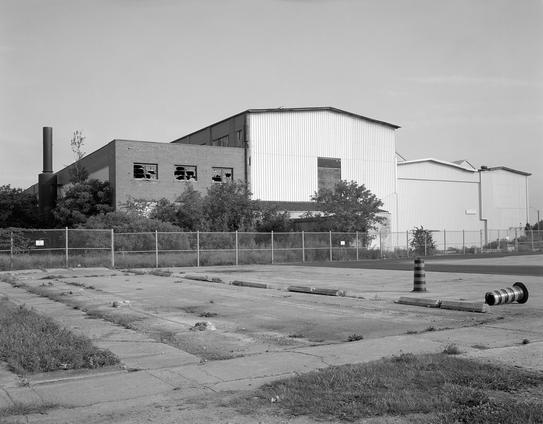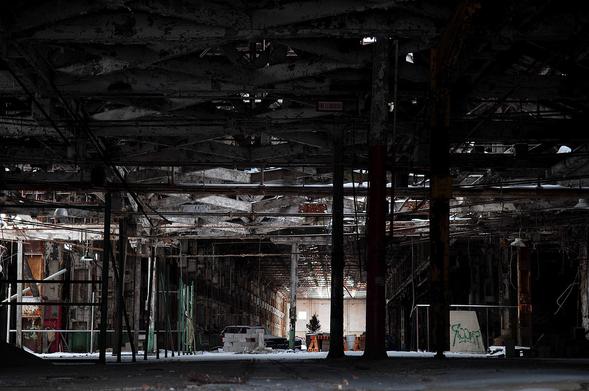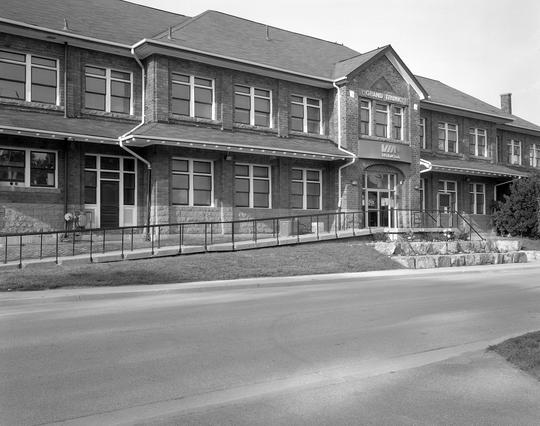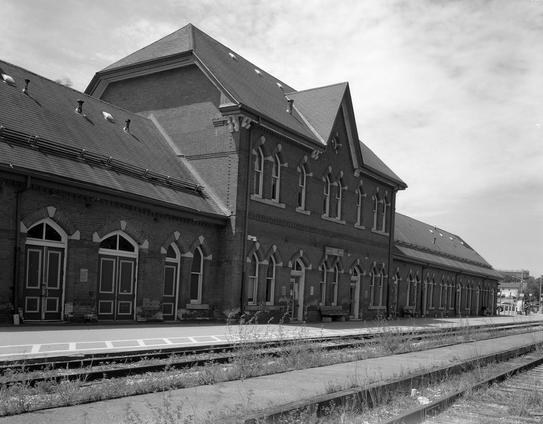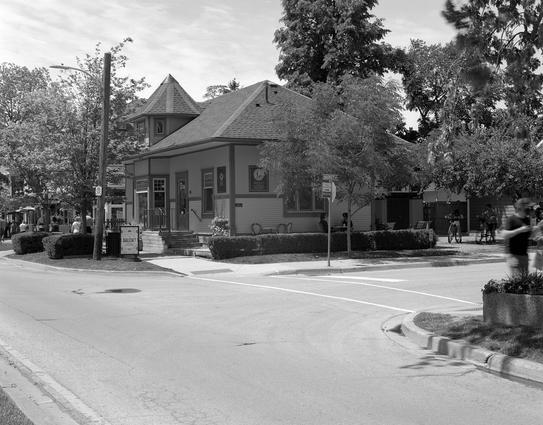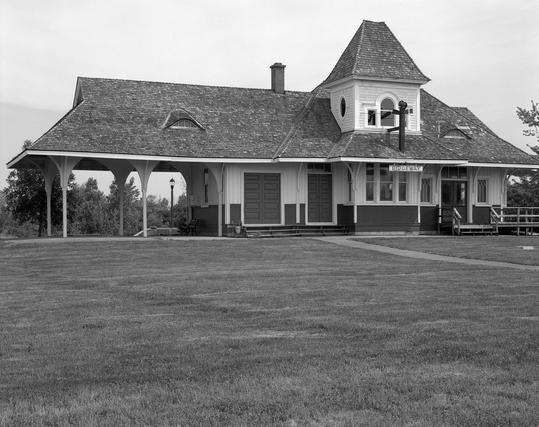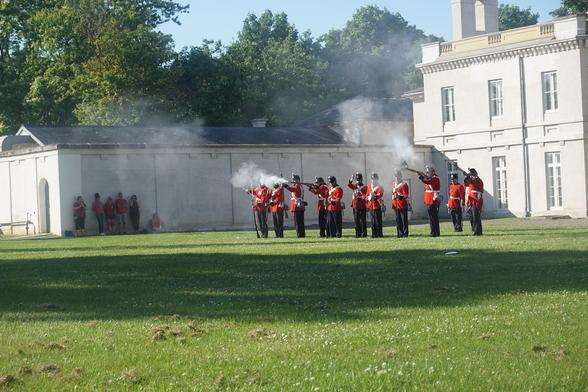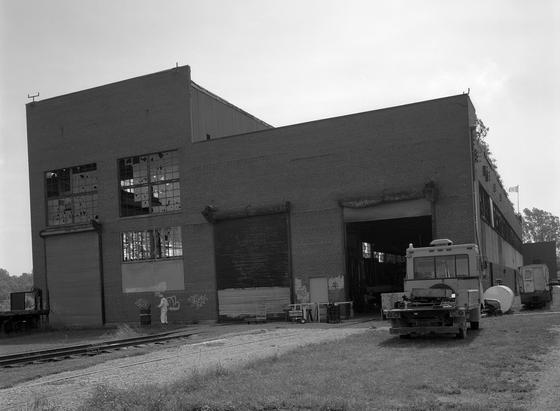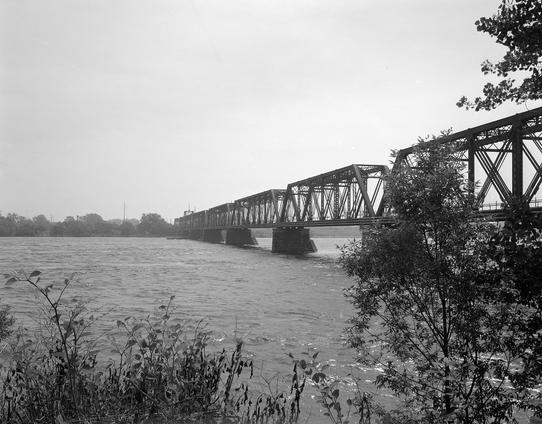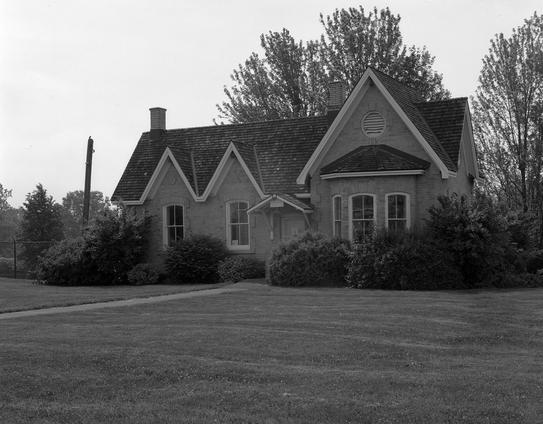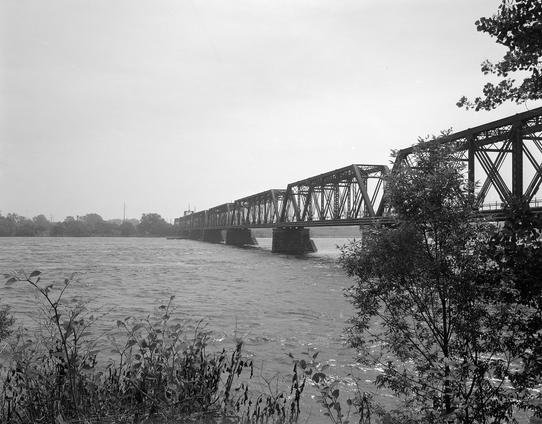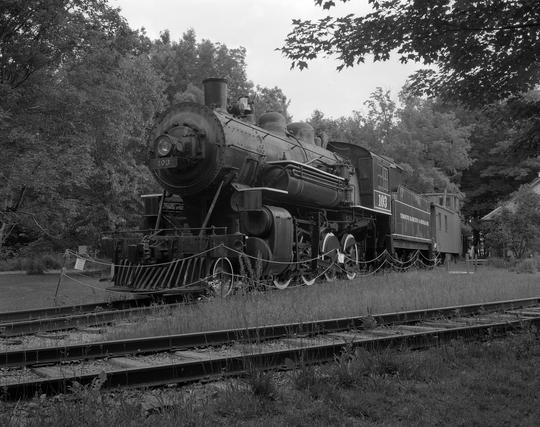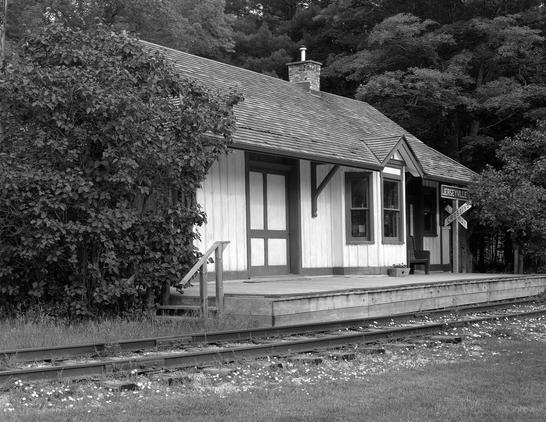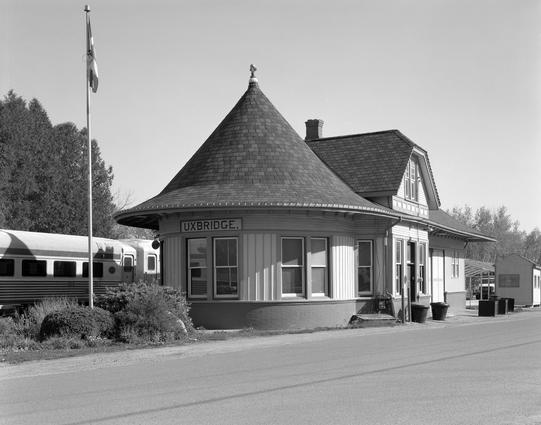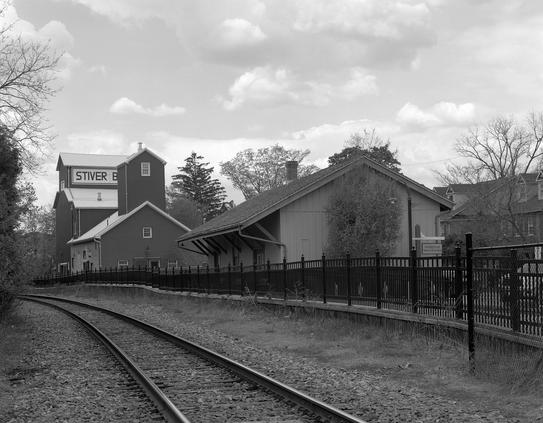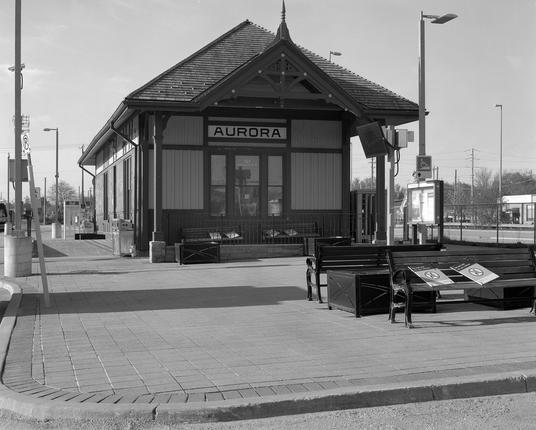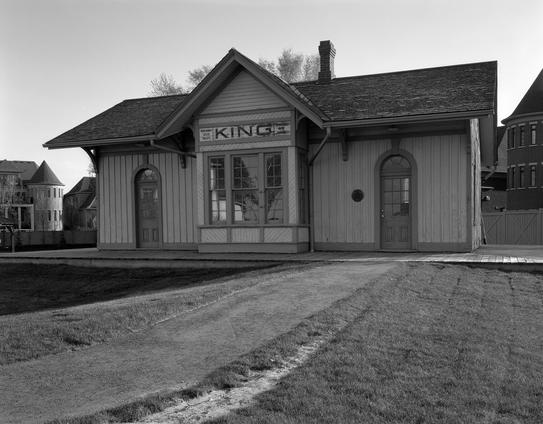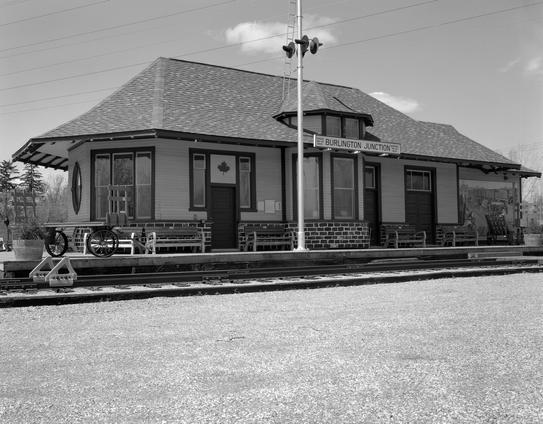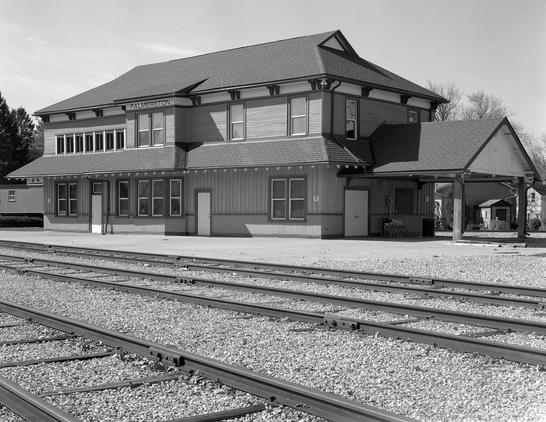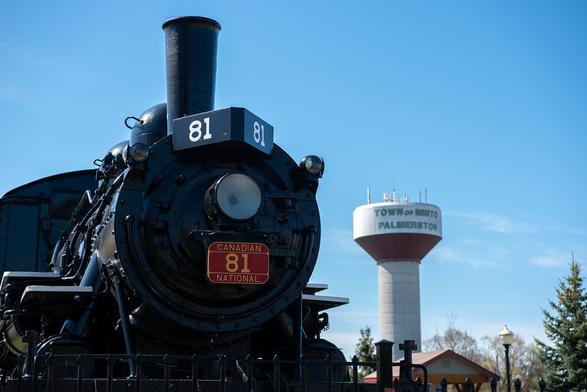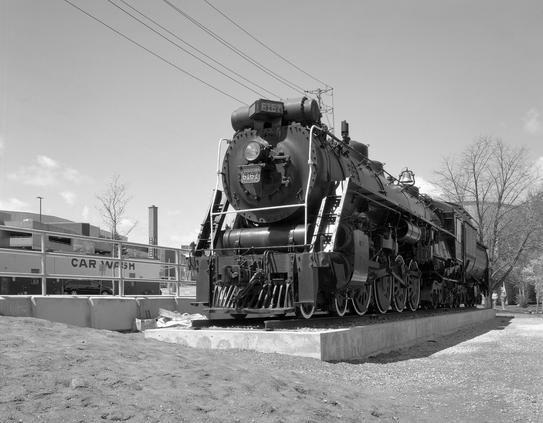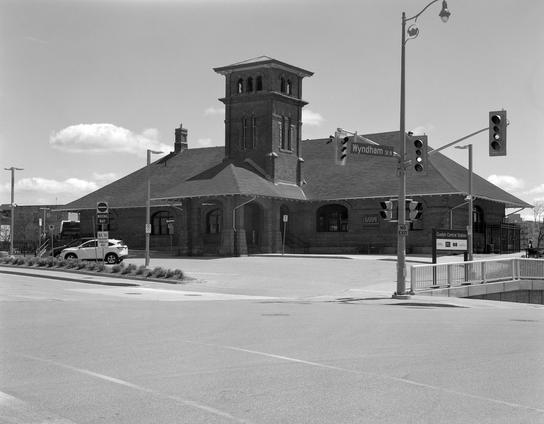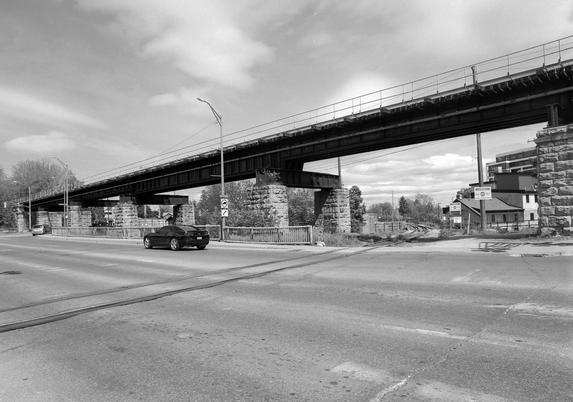A Faded Glory – Stratford Motive Power Shops – Grand Trunk Railway (1873-1964)
Looming over the edge of the downtown, the old Stratford Motive Shops has been a source of controversy and reminder of the city's rich heritage for many years with the railroad. These are the surviving remains of the largest railroad maintenance yards in Ontario, if not Canada and are now only a shadow of their former glory. Metal siding hangs off the concrete superstructure; empty windows stare out darkly. On one of the first visits I made to Stratford on my own, I was immediately drawn to this ancient giant and was even granted a single glimpse into the darkness but never made it inside (legally or illegally).
While not the most interesting angle it was the only one that I could get easily and safely.
Graflex Crown Graphic - Fuji Fujinon-W 1:5.6/125 - Ilford HP5+ @ ASA-200 - Pyrocat-HD (1+1+100) 9:00 @ 20C
As I mentioned last week, the railroad arrived in Stratford in 1856 with Grand Trunk and Buffalo & Lake Huron running their lines through the town within a couple of months of each other. Within a decade, Grand Trunk had taken over the entire Buffalo & Lake Huron line. This put Stratford in a unique position as a Junction point between the two lines. As Grand Trunk began looking for space to build a new western maintenance yard, the story goes that Herbert Roberts, the manager for locomotive maintenance in Grand Trunk, attended dinner at T.M. Daily's house, Daily being the mayor of Stratford, was attempting to attract Grand Trunk to the town. Roberts fell for Daily's daughter, and the two were married. In 1871 ground broke on the new Motive Power Shops in Stratford. While there's no concrete connection between Robert's becoming Daily's son-in-law and picking the town for the unique shops, it is a local urban myth. The new shops opened in 1873 on a nineteen-acre site that included a significant rail yard near the new station. The shops had a vast locomotive shop, powerhouse, roundhouse, turntable, machine shops and worker housing. Grand Trunk closed smaller shops, redirecting the personnel to Stratford. The famous overnight jump allowed Stratford incorporation as a city. The first task for the new shops was to begin the long process of regauging the entire locomotive fleet from Provincial to Standard Gauge. The shops provided both jobs and job training, all of them good Union jobs. This influx of workers and good training opened up a new set of skilled artisans many would start the furniture industry in Stratford. Through the 1880s, Grand Trunk began a series of expansions mainly by purchasing competing railways, Great Western, North & North-Western among the largest two purchases. To help cushion the cost of these purchases, Grand Trunk began strategically closing down the larger maintenance shops of these other operators, moving talent and equipment to Stratford. The influx required significant renovations and expansions at Stratford in 1889.
You can see where the metal siding is starting to peel away.
Nikon D750 - AF-S Nikkor 28-70mm 1:2.8DPart of the older section of the Motive Power Shops.
Nikon D750 - AF-S Nikkor 28-70mm 1:2.8D
When Charles Hayes took over as President in 1896, he kicked off a series of modernisations across the entire network. Grand Trunk targetted their two largest shops, Stratford and the one in Battle Creek, Michigan. At Stratford, the new shops took shape around the existing locomotive shops, other buildings were torn down and replaced. One new building was a Tender Shop which opened in 1903, and in 1909 the new Motive Power Shops were completed. Charles Hayes himself was present for the opening ceremonies. Further expansions took place through the 1910s. In their final form, the locomotive shops alone took up 185,000 square feet. Electric cranes could lift the largest locomotives in the Grand Trunk fleet. Staff on-site could conduct complete rebuilds of even the worst locomotives. The shops continued to employ thousands with solid Union positions, and often these jobs were generational, with three generations of workers being in the employ of the Railroad. When Canadian National took over in 1923, they gained the largest motive power shops in Canada staffed by a highly-skilled workforce. The shops could even support the new Northern type locomotives starting to roll out of the Montreal Locomotive Works and even outstripped the expanded Spadina Yards in Toronto. Workers here would join other Unionized workers in the Stratford General Strik of 1931. By the post-war era, Canadian National had started the long process of diesel-electric as their primary motive power and large shops like Stratford were no longer needed. Through the second half of the 1950s, the shops slowly shut down, and among their final tasks were preparing several Northern locomotives for service as tourist trains. The shops closed in 1964.
Ex-CN 6213 is one of the final Northern Locomotives to receive a full refit at the Stratford Motive Power Shops.
Nikon D750 - AF-S Nikkor 28-70mm 1:2.8DA peek inside back in 2009 sadly I could not fit through the hole with all my winter gear on.
Nikon D300 - AF-S Nikkor 17-55mm 1:2.8G DX
Following the closure, most of the railway buildings were demolished, including the roundhouse, tender shops, machine shops, and freight sheds. The one building that proved challenging to destroy was the actual locomotive shops. The economic impact on the city was far worse; At the same time, some employees were moved to other maintenance facilities, including the Warren Street Shops in Fort Erie, many were packaged out. Ohio based company Cooper-Bessmer established a Canadian branch of their firm using the old locomotive shops as it provided an excellent spot for the manufacture of industrial compressor engines. Many began referring to the old shops as the Cooper Site, which I initially knew for the site. While the company did bring some jobs back to the city, it remained a far cry from what the site employed. Cooper-Besser pulled out in 1984, closing the area for good. The site became a popular spot for urban explorers. However, 2003 destroyed much of the interior. At this point, the city purchased the area and began to secure the location and entertain adaptive reuse for the white elephant in their inventory. Proposals have ranged from a museum to a parking garage. The University of Waterloo looked at making use of the building but built a new structure nearby. Today the surviving Motive shops remain under constant threat of demolition despite ongoing attempts to preserve the ruins.
#afadedglory #canada #canadiannational #coopersite #crowngraphic #grandtrunk #ilfordhp5 #infrastructure #nikond300 #nikond750 #ontario #pyrocathd #railroad #railway #stratford #stratfordmotivepowershops
